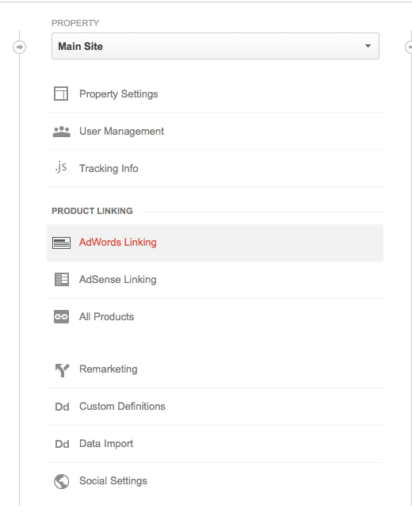Using Google Analytics for AdWords Conversion Tracking

Everyone accepts the tenet that conversions matter. Any successful marketing campaign needs some form of conversion tracking, whether they are sales, leads, or e-mail sign-ups.
Most often accounts default to utilizing the AdWords conversion code. This simple to implement code automatically fires anytime someone reaches a certain stage of the customer cycle. However, there are other options.
Today we’ll cover importing Google Analytics goals as conversions in Google AdWords. The Analytics code offers a few advantages for certain retailers.
Getting Started
The first step is setting up goals in Analytics. Goals are the equivalent of conversions in the Analytics ecosystem. Since the platform tracks across the whole site rather than firing on a specific page, you’ll need to do a little configuration yourself.
With the popularity of Google Analytics, many readers will already be good to go. If you haven’t created goals, take the chance to create them as soon as possible. They don’t cost anything and are valuable in analyzing your site and user behavior.
Rather than counting actions, Analytics will allow you to see what sort of activities and pathways led to completing specific actions, giving you more insight into the process. If you’d like to learn more, make sure to check out the help material or guides for help.
Set Up
The first step to importing analytics data is to make sure your AdWords and Analytics accounts are linked. To do this, log in to Analytics and select the Admin tab. From here look at the “Property” section and you will find the option under the second heading, product listing.

Once those are linked the two platforms will sync and begin sharing data between one another. As a side note, make sure you have enabled AdWords Auto-tagging. Auto-tagging will ensure that each click and action is attributed properly.
You can now go back to your AdWords account and begin the import process. Simply select “Conversions” from the Tools menu, then follow the steps below. You will then see the option to import Analytics goals. Clicking this option will open a new menu with all available goals and options for importing them.



That is all you need! Conversions should automatically import into AdWords from there and populate the conversions column in AdWords. Even if you don’t ultimately use goals as conversions, you ought to go through these steps anyway. At the very least it will get you in Analytics so you can take a look at features like Analytic’s lists, which are a powerful way to create remarketing lists for use in AdWords.
Advantages
You may ask, why bother with importing goals when you can use the AdWords conversion code. Often times you are right as the AdWords tracking solves most issues. Goals offer more flexibility in that you can use your pre-existing Analytics code to create new goals without requiring new conversion codes.
Goals also offer more nuanced options than conversions, such as tracking assets like video clicks. Rather than direct usage, a business may have KPIs related to behavior or a specific sequence of actions that indicate a successful visit. This could be something like following a certain process of steps rather than arriving on a discrete page.
Differences In Data
The main differences between Analytics and Adwords are caused by the different ways data is tracked. Analytics ties data to the time of the action, while AdWords ties data back to the last click (which can also be the first click). This creates discrepancies in tracking for conversions that occur in days after the last click.
For example, a user searches for your product and clicks a Google ad. He or she favorites the page and goes off and thinks about the purchase for two days. After deciding to make the purchase the user then reloads the page, puts the item in the cart, and makes the purchase. In this case, AdWords ties the conversion back to the day of the click, two days previous. Analytics ties it to the time of the purchase, or the day the user reloaded the page and actually bought the product.
In many cases, this won’t create any major headaches but if you’ve ever compared Analytics data to Adwords directly, you’ll understand there are minor errors that aren’t wrong per se, just different.
Common Issues
Counting Conversions Multiple Times – If you import Analytics goals, make sure you aren’t also counting AdWords conversions. If you are tracking the same action, such as a sale, you will effectively double your actual conversions since AdWords will count it and then Analytics will import the same conversion into AdWords. This issue isn’t fun to discuss with clients.
Conversions Are Not Appearing in AdWords – There is a 24-72 hour delay from the goal completion to arriving in AdWords. It is slightly frustrating, especially when your trending towards the 72 hours, but it is a fact of life. Don’t be alarmed to check in on your account and find no conversions in the last day. The same warning goes if you use a standard date range past 7 days and you see CPA has spiked. It probably didn’t, you are simply missing the most recent conversion data.
Conclusion
Have you ever used Analytics Goals data in AdWords? Did you prefer it go AdWords conversion tracking or were the common issues such as import delays something you didn’t want to deal with? Feel free to leave a comment and any questions or suggestions for fellow readers.



